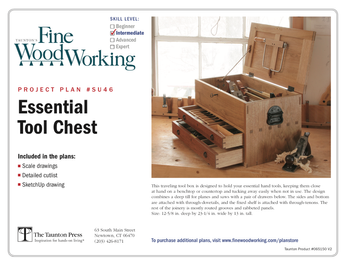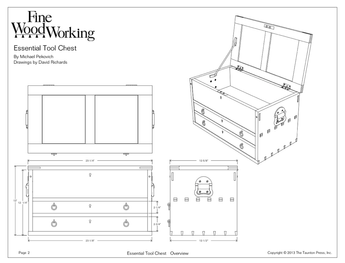New power for shop: behind drywall or on top?
Retiring soon, I’ll be moving to a new residence and I’m anticipating a scenario where the walkout basement may be finished. For new power should I be focused on putting the power behind the drywall or on top. This will likely not be my last residence and I’m a little concerned about what new residents may think of all the receptacles everywhere. At least with conduit it can all be removed.















Replies
Sounds like you should have enough behind the drywall to pass code, light switches where they are expected, etc.... add the shop extras on top.
I’ve anticipated a less than ideal situation but I won’t bother you with details 😊.
If allowed I’d like to run a multi-wire branch circuit with 120 & 220 at each tool. It would seemingly take care of most issues. This is a path I haven’t travelled yet.
I did that in my shop, ran 12-3 and wired up 120 and 240 V outlets in each duplex box. Super convenient and the building inspector was very happy - no questions or concerns. Finding the cover plate that combines the outlet configurations was the hardest part!
I would go with the exposed conduit ,at least for machine circuits. Easy to change , add or move.
Is that metal clad cable?
Solid tube conduit. Metal conduit gives you the ability to pretty easily make changes if the need arrives. You can have multiple circuits in a single run making it more compact. You might consider putting in a subpanel thereby separating the shop electrics from the house circuits.
Thank you for clarifying.
My wiring is on the wall and easily accepts upgrades/extensions to additional boxes. Ditto on the overhead fluorescents.
I went all behind since I treasure my wall surface for storage. Things like three-way switches and twice the number of 120v and 240v outlets you think you will ever need helps too. Pictures before wallboard goes up and good labeling is also helpful down the road.
P.s. Always, always comply to code. Failure to do so complicates insurance claims, future sales, etc. You local building permit folks can tell you what version of the NEC you need to comply with.
Double is not a bad idea.
Where is the 100-hp, 240v rotary phase converter going?
;)
Since it's an un-finished room, you prolly won't have code issues moving in. When it's time to move out, you might have created show-stopping code issues that might trip up a future buyer. I'd consider making the finished room 100% code-compliant and then as mentioned above, run your power outside the wall and take it with you.
Another option is to add extra circuits if you have new-construction flexibility. I'm in a finished basement shop and during construction I added dedicated B and C circuits where I knew my tools and dust-collection were going. The only thing the next owner will notice are the extra breakers on the main panel, several ceiling outlets, and an over abundance of double gang outlets in that particular room.
If it's already a "finished" basement your best bet is to surface mount conduit and a dedicated subpanel.
You could rip open the walls and run cable but lets be honest a workshop is never static. At some point your going to want to move a machine or buy a new toy then you'll need to run a new circuit. Are you going to move everything out of the way to rip open the walls open again?
I recommend the subpanel because when you move its going to be easier to disconnect one breaker and wire from the main panel than a half dozen. Its also nice to throw one switch and have everything turned off to the shop.
and make sure you pull permits.
Thanks everyone for your expertise. 👍
If you don't know then you don't know but this kind of wiring and virtually all house wiring is pretty easy stuff. Required wire gauges ,amperage, three way switches that for some reason I still have to draw it out before I do it even though I have done it a hundred times -well they hide that information in books. I will read procedure before I start even though I probably already know what to do because ,well ,I don't do this everyday. I'm not an electrician but my Grandfather was and on big industrial stuff. When it came to house wiring, and I would include home shop wiring in this his advise to me was.." Black to Black,White to White, what's to know!"
Pulling a permit will likely require you to hire a licensed electrician. This might change the economics of what you are hoping to accomplish. I know a very good electrician, a German guy that used to work on nuclear subs. He could care less about permits and if I run into a situation that I think is over my head I give him a call.
To me the permit's not for the work, it's for the insurance company inspector after the unrelated fire claim in the adjacent kitchen. I confess I've done work on my house, but for the sub-panel in my shop I hired it out. I ran most of the wire and hung the boxes to save labor, but the guy with the license tied it all together and I have the paper to prove it.
If you hire an electrician to put in a sub panel and he doesn’t mention a permit then I’d hire another electrician.
Detached garage shop about 50 ft from the house. There was already one 15amp circuit to the garage. I paid an electrician to install a 60 amp sub-panel. I also had a kill switch put in before the panel. It allowed me to kill the power to all the machines and make the shop a bit safer for kids. Now my son and his friends were never out there without me, but it gave me piece of mind to look away for a minute. The org circuit runs only lights and a fan. The shop was a meeting place during the pinewood derby days. Oh and everything is in conduit on the surface. The walls are painted osb.
To be clear. I hired a pro for the sub-panel install. The individual circuits within the shop I ran myself. Not hard or dangerous if you follow basic rules and test your new circuit when finished. All work was inspected by a city inspector. His chief criticism was by wonky conduit bends. Don't sell yourself short. Even 240 is easy. Just pay someone to inspect the work.
Exposed, by a long shot.
Hire a licensed, reputable electrician, get a permit, do it right. You wouldn't find the cheapest brain surgeon in town.
A surface metal raceway, aka wiremold, will provide maximum flexibility. I've relocated 120 and 240v receptacles several times as my machinery placement has changed. If you move you can always take it with you to a new shop.
When I did my shop about 12 years ago (really the garage), I ran as much power in the walls as I thought I needed. I did a pretty good job but ended up missing a few places based on tool locations, etc. As such, I now have a few metal conduits outside on the wall. I prefer "in the wall" because the conduit and the metal outlet box are places for dust to collect. Not the end of the world.
If flexibility and future-proofing are priorities, running conduit on top of the drywall makes sense—easier to adjust or remove later. But for a cleaner look and better resale appeal, behind drywall is often preferred. Depends on how permanent you want it to feel.
This is for GEEDUBBEE--you have your 20amp receptacle upside down....
ground goes up for a 20amp receptacle.